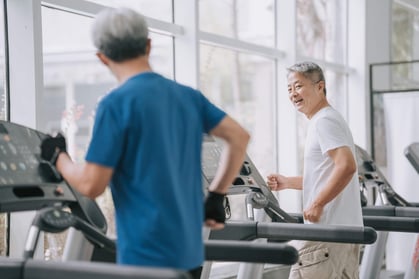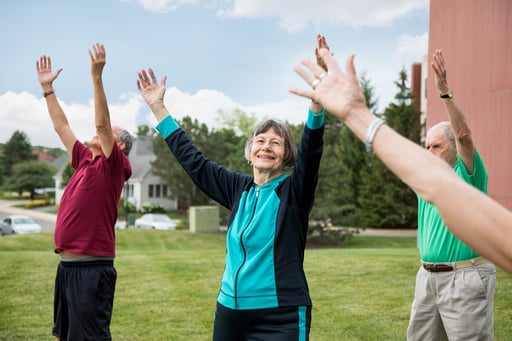 Popularized by James Clear in Atomic Habits, habit stacking involves pairing a desired action with something you already do daily. Examples of routine actions include waking up, brushing your teeth, or putting on your shoes. By adding a desirable action directly before or after these existing habits, it becomes easier to incorporate into your life.
Popularized by James Clear in Atomic Habits, habit stacking involves pairing a desired action with something you already do daily. Examples of routine actions include waking up, brushing your teeth, or putting on your shoes. By adding a desirable action directly before or after these existing habits, it becomes easier to incorporate into your life.
Sounds simple enough, right? However, a bit of planning will help, especially if we take advantage of a natural motivator: dopamine.
Dopamine is a hormone and neurotransmitter involved in several body functions. Here, we’ll focus on its role in the reward system, or pleasure feedback loop. This system is designed to reinforce positive behaviors. When we perform an action that brings a positive feeling, our brain releases dopamine, making it more likely we’ll repeat that action.
Let’s dive into the strategy and how you can use it to replace a habit you don’t like with a more desirable action.
Example 1: Attach Your Desired Action to an Everyday Task
At the end of each workday, you may check your email, turn off your computer, and pack up your bag. To kickstart a fitness habit, try adding “put on gym shoes” as the last step. In the beginning, you don’t even need to go to the gym afterward—just build the habit of putting on those shoes. Once this becomes routine, you’re ready for the next step!
Example 2: Link a Desirable Action with a Less Helpful Habit
If you tend to eat unhealthy snacks and watch too much TV in the evenings, try replacing this with a new habit. Schedule cooking dinner first, making it a necessary step before you unwind with screen time. Cooking requires a bit of effort, but it comes with a built-in reward: a tasty meal! Plus, stacking a desirable action with a habit that triggers dopamine can help phase out the less desirable habit over time.
Example 3: Build on Your Routine with Additional Desirable Actions
After a few days of swapping work shoes for gym shoes, add a walk past your fitness center on your way to the car. With the reward system in full effect, you can keep adding steps to your routine. Soon, finishing your workday with a workout will feel natural.
Habit stacking is a powerful, practical way to transform your routine and achieve lasting change. By linking desired actions to existing habits and utilizing the brain’s natural reward system, you can create a pathway to your goals that feels both manageable and motivating.
Start small, stay consistent, and allow each new habit to build on the last. With time, effort, and the right mindset, you’ll develop routines that serve you well, benefiting both your body and your mind.
Habit Stacking with the Holiday Hustle
The Holiday Hustle program is a perfect example of habit stacking in action. The three core tasks—taking 50,000 steps per week, drinking 64 ounces of water daily, and carving out 5 minutes for yourself—are simple habits that can be linked to your existing routines. For example:
- Take steps during your lunch break or while making evening phone calls.
- Drink a glass of water with every meal or coffee break.
- Practice mindfulness or relaxation for 5 minutes right before bed or after brushing your teeth.
Once these habits become part of your daily rhythm, you can build on them by adding more healthy actions, like stretching after your walks, incorporating a morning gratitude journal, or prepping balanced meals for the week. The Holiday Hustle sets a strong foundation for your well-being, helping you maintain your health through the busy season and beyond.
Why wait until New Year’s to start building better habits? Start your habit stacking today and take the first steps toward a healthier, more fulfilling lifestyle!

 Congratulations! You’ve decided to get started with your fitness journey! Now what?
Congratulations! You’ve decided to get started with your fitness journey! Now what?.jpg?width=486&name=winter%20exercise%20GettyImages-1048608792%20(1).jpg) When winter blows in and the days start to get shorter and colder, you can pull the blankets over your head and hibernate—or you can suit up and head outside for an outdoor winter adventure. Exercising in colder weather has distinct advantages over working out in warmer weather, so there is no reason to take a break when the temperatures drop. There are a number of advantages to working out in colder weather that most people disregard.
When winter blows in and the days start to get shorter and colder, you can pull the blankets over your head and hibernate—or you can suit up and head outside for an outdoor winter adventure. Exercising in colder weather has distinct advantages over working out in warmer weather, so there is no reason to take a break when the temperatures drop. There are a number of advantages to working out in colder weather that most people disregard.
.jpg?width=468&name=GettyImages-638573962%20(1).jpg) The holidays are always such busy times! Managing all the things from day to day tasks, much less the extra holiday parties, celebrations, decorating, shopping, etc. Many times people decide to skip workouts or cooking at home to make time for holiday activities. You shouldn't forgo your normal routine and it's best if you try to maintain some normalcy when it comes to your exercise routine and eating healthy. Take a moment to pause and incorporate even just 30 minutes of activity that includes the whole family.
The holidays are always such busy times! Managing all the things from day to day tasks, much less the extra holiday parties, celebrations, decorating, shopping, etc. Many times people decide to skip workouts or cooking at home to make time for holiday activities. You shouldn't forgo your normal routine and it's best if you try to maintain some normalcy when it comes to your exercise routine and eating healthy. Take a moment to pause and incorporate even just 30 minutes of activity that includes the whole family..jpg?width=396&name=GettyImages-864508820%20(1).jpg) The holidays are a busy time for everyone. Multiple family gatherings, end of the year projects, tons of shopping, yet somehow you have to find time to exercise. Consistency is key with almost everything in life if you want to continue to have motivation towards something important to you. Often times individuals find themselves taking one or two days off from something and those couple of days turn into a week or a month. Exercise is especially something that can be difficult to get back on track after a short break, so continuing your normal routine is vital.
The holidays are a busy time for everyone. Multiple family gatherings, end of the year projects, tons of shopping, yet somehow you have to find time to exercise. Consistency is key with almost everything in life if you want to continue to have motivation towards something important to you. Often times individuals find themselves taking one or two days off from something and those couple of days turn into a week or a month. Exercise is especially something that can be difficult to get back on track after a short break, so continuing your normal routine is vital.
.jpg?width=383&name=GettyImages-936397332%20(1).jpg) Walking everywhere is slowly becoming a bigger trend, specifically in states that it never used to be. As fitness trackers are being used more and more, step challenges are increasing both at work and at home. Research is discovering the benefits of walking and ensuring that people are getting their steps in every day. Walking is one of the best means to reach physical activity recommendations and by meeting those recommendations, individuals lower their risk for diseases such as cardiovascular disease, diabetes, obesity, and many more.
Walking everywhere is slowly becoming a bigger trend, specifically in states that it never used to be. As fitness trackers are being used more and more, step challenges are increasing both at work and at home. Research is discovering the benefits of walking and ensuring that people are getting their steps in every day. Walking is one of the best means to reach physical activity recommendations and by meeting those recommendations, individuals lower their risk for diseases such as cardiovascular disease, diabetes, obesity, and many more..jpg?width=401&name=Woman%20running%20in%20snow%20-%20GettyImages-894281874%20(1).jpg)
.jpg?width=381&name=Bored%20with%20exercise%20-%20girls%20GettyImages-844164510%20(1).jpg)

